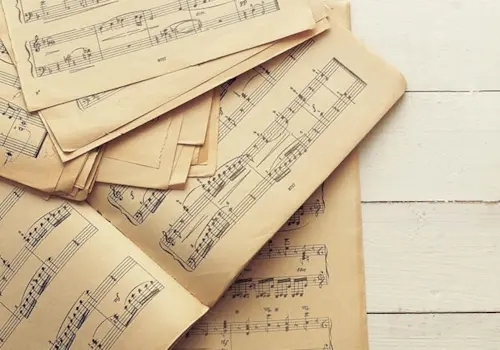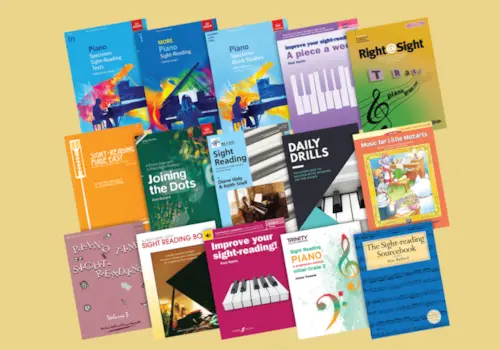08 October 2025
|
If you are going to learn the piano seriously, you will need to know your scales and arpeggios. Michael McMillan rounds up the many publications on offer that will put your fluency to the test.
What’s the point of playing scales and arpeggios? Students often respond that they need to learn scales and arpeggios because examining boards assess them. So why do examining boards test them? The answer to this is not, as one student facetiously opined, to abuse candidates. It is because scales and arpeggios help to promote good fingering habits, improve evenness in both tone and rhythm, develop coordination, enhance one’s sense of keyboard geography, and elevate understanding of musical keys. Scales and arpeggios have been used by pianists for hundreds of years to reap these benefits, and their appearance on exam syllabuses reflect their importance as a core part of one’s technical education.
Two of the most widely used examining boards – ABRSM and Trinity College London – publish their set of scale/arpeggio requirements in contrasting ways. ABRSM have individual books devoted to the requirements of each grade. Trinity used to do this too, but now incorporate them within their books of repertoire for each grade. These are clearly presented with no frills, and show the notation for the relevant scale/arpeggio requirements. But these are not your only options within the graded system. There are other books tailored specifically to the syllabus requirements with significant differences in the mode of presentation.
Scale Shapes for Piano by Frederick Stocken, for example, which is based on the ABRSM syllabus and available up to Grade 5, eliminates the process of reading musical notation by laying out each exercise graphically, i.e. by printing the fingering of each exercise on the keys of a four-octave keyboard. Bypassing the notation enables quicker learning for many people, particularly in the lower grades, but surely there would be no downside to including the notation somewhere on the page to mentally relate and fix the physical patterns.

This is exactly what Jane Mann has done in her set of three books titled The Key to Scales & Arpeggios published by Alfred. Though not as smartly presented as Scale Shapes, they cover more bases by encompassing both Trinity and ABRSM syllabuses (though some Trinity Grade 2 syllabus requirements are missing), and include helpful fingering pointers. With the exception of five pages that are devoted to broken chords in the Grades 1-2 book, the complete contents of it and the Grade 3-4 book are reproduced in the Grade 5 book. Putting those five pages of broken chords into the Grade 5 book, and relabelling it as Grades 1-5 (which happens to be all the diatonic scales and arpeggios) would have made that book a much more attractive proposition.
And, finally, Scale Explorer is a series of books written by Alan Bullard to complement the ABRSM syllabus. These are thorough, notation-only books that aim to solidify the student’s knowledge of exercises through the use of short, scale and arpeggio-based workouts. The books are detailed and will certainly improve a student’s playing, although I imagine that the type of student that has the dedication and motivation to work through these books probably won’t need them in the first place.

Explorations both basic and complex
Moving away from books linked to the exam syllabuses, there are several ‘all-in-one’ products that cover all diatonic scales and arpeggios whilst differing in the amount of additional forms (e.g. scales a third apart, arpeggios in inversions) they depict. The most basic of these is Scales & Arpeggios Exercises by David Dutkanicz, published by Dover. It includes notation-only presentation of major and minor scales (in melodic, harmonic, and natural forms), arpeggios in root position, and a brief introduction to chromatic, pentatonic, whole-tone, modes, and blues scales. If you can look past the smaller book dimensions and uninspiring front cover, this is a useful reference volume, particularly for early learners who will appreciate the larger font size it employs.
The Piano Trainer Scales Workbook, published by Faber, combines both notation and pictorial descriptions of pretty much the same material, but there is also a significant amount of editorial input in the form of activity pages and ‘scale coach’ tips. The overall presentation lends itself very well to the lesson environment and this book is warmly recommended to pianists up to Grade 5.

Moving up a step in terms of complexity, Faber’s notation-only Complete Scales and Arpeggios is easy on the eye despite detailing up to 12 scales and arpeggios per double page. Two-octave major, melodic minor, and harmonic minor scales are printed in octaves, contrary motion, a third/tenth apart, sixth apart, and double thirds, whilst major and minor arpeggios are given in root position, first and second inversions. Dominant and diminished sevenths are also given for all notes, and a selection of chromatics and whole-tone scales are included at the back of the volume together with pentatonic and blues scales starting on every note. This amount of coverage is suitable for the vast majority of Grade 6 to Diploma level pianists.
ABRSM’s Manual of Scales, Broken Chords and Arpeggios is similarly organised and equally impressive in terms of presentation. It doesn’t address pentatonic or blues scales, but is more comprehensive in other areas, giving contrary motion scales a third and sixth apart, double sixths, double octaves, and broken chords in all keys; these make the book 50 per cent thicker, and a little bit more expensive. Additional qualities to this volume are its superior, smyth-sewn binding, and alternative fingering suggestions which are included not just for double-thirds and chromatic thirds, but also for octave apart scales such as D and G major which some educators prefer over the standard fingering.

The next two offerings originate from the United States, and both feature cadences in addition to scales and arpeggios. Hal Leonard’s All-in-One Piano Scales, Chords & Arpeggios includes a puzzling selection of exercises, however. Whilst all the other books addressed on this page print two-octave scales and arpeggios, Hal Leonard have chosen to print each major scale in one, two, three, and four-octave versions, melodic and harmonic minors in two octaves, and harmonic minors in two, three, and four octaves. Arpeggios in root position, I-IV-I-V-V7-I cadences, broken triad inversions, and chords of the scale are included for each key, but staples at this level such as dominant sevenths, inverted arpeggios, and scales in different intervals are not included. Wouldn't the inclusion of these items be more useful than the superfluous repetition of scales in different lengths? The only index is the list of keys on the first page of the book, and the overall package has a rather workmanlike feel.
What this book could have been is Alfred Music’s Complete Book of Scales, Chords, Arpeggios & Cadences which begins with a 14-page explanation of the musical theory behind the various exercises. Major scales in thirds and sixths, dominant sevenths, and arpeggios in inversions are included in addition to what appears in Hal Leonard’s volume, and the general presentation is far more inviting; if you’d like to have cadences in your exercise routine, this is the book for you.
And the rest
Briefly summing up a few other books on the market, the presentation in Madeleine Dinsart’s Scales and Arpeggios, published by Schott, is too dated and uninviting to warrant serious consideration. Visual Piano Classical Essential Scales takes the notation-cum-pictorial approach, but the graphics fall well short of the standards set elsewhere.
And Visualize Keyboard Scales & Modes from Hal Leonard lists seven modes for every note, along with melodic and harmonic minors, graphically and using notation. No fingering is given and this is a rather niche product, but I imagine there will be some people interested in exploring modes who will find the book useful as a reference volume.

In conclusion, there is no single book that caters best to the requirements of all pianists, but if you’re following an exam syllabus, the associated book from the relevant examining board is an obvious choice. But if reading notation is problematic, Scale Shapes and The Key to Scales & Arpeggios are equally attractive alternatives.
If you aren’t on the exam trail, The Piano Trainer Scales Workbook is an excellent choice for pianists up to Grade 5 level, and, for more advanced pianists, Faber’s Complete Scales and Arpeggios and ABRSM’s Manual of Scales, Broken Chords and Arpeggios represent outstanding options.

We hope you've enjoyed reading this article. If you're looking for similar advice for sight-reading, take a look at Michael's in-depth Guide to Sight-Reading!







